Biomedical Radar for Contactless Health Monitoring
By Marco Mercuri, Ping Jack Soh, and Dominique Schreurs
Fall incidents and sustained injuries represent the most dangerous hazard for elderly people. The rapid detection of a fall event can reduce the mortality risk and increase the chance to survive the incident. A variety of fall detection methods have been published but they suffer from critical limitations. In this work, a radar-based health monitoring system enabling non-invasive fall detection and tag-less localization in the home environment is presented and discussed. Experimental results demonstrate a success rate of 94.3% in distinguishing fall events from normal movements and a good detection of the target’s absolute distance.
The elderly population of 60 years and older has been steadily increasing worldwide. The situation has resulted in a growing need for novel assistive technologies that enable and facilitate routine long-term monitoring. Monitoring is of primary interest in the home situation. In particular, falls and sustained injuries among the elderly are a major problem worldwide, and are the third cause of chronic disability [1]. The rapid detection of a fall event can reduce the mortality risk and increases the chance to survive the incident and to return to independent living. Alarm systems connecting to medical care units do exist, but they involve wearable sensors that often require an action from the person, like pressing a button. Such solutions constitute a risk as one cannot assume that the elderly person will systematically wear the sensor every moment of every day, and moreover persons in an emergency situation may not longer have the reflex to press this button or may no longer be able to do so.
The ideal solution therefore is a contactless approach avoiding the need for actions by the elderly person. Systems under investigation are based on video cameras, floor vibration and acoustic sensors. For the video camera method, people are currently trying to address challenges related to low light, field of view, image processing, and also privacy is a concern. Floor vibration and acoustic sensors have limited success due to the environmental interference and background noise. Moreover, they are not good in case of a “soft” human fall in which the individual collides with an object (table, dresser, chair, carpet, etc.).
This work aims at investigating a novel complementary approach for health monitoring. The detection of falls together with tagless in-door localization can be made contactless by adopting radar techniques [2]. The radar is used to transmit an RF signal to a person and to receive the reflected echo, on the basis of which the person’s speed and absolute distance can be extracted. The changes in speed are used to distinguish a fall event from a normal movement (i.e., walking, sitting down). In fact, during a fall the speed continuously increases until the sudden moment when the fall is finished. During walking or sitting down, the movement is controlled with less variation in speed.
A full system for indoor, non-invasive fall detection and tagless localization has been presented in [3] (Fig. 1). It consists of a sensor, combining radar sensing and Zigbee wireless communications, and microcontroller capabilities, and of a Zigbee equipped base station for data processing.
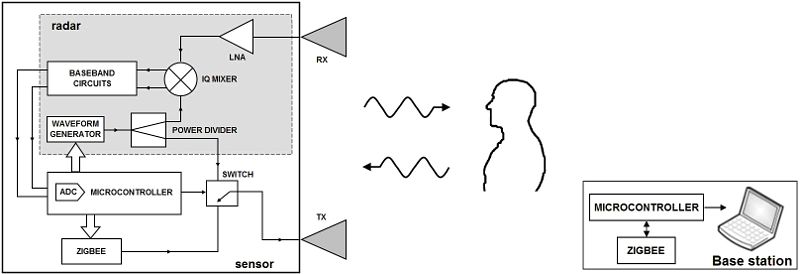
Figure 1: Block diagram of the health monitoring system.
As demonstrated in [4], in order to satisfy the spectrum mask requirements and to have a practical commercial device, traditional radar architectures are not suitable solutions for this application. For that reason, an optimized waveform has been designed based on a hybrid approach by which a single tone at fISM = 5.8 GHz in the ISM band is alternated with a stepped frequency continuous wave waveform working in the 6-7 GHz UWB band. Moreover, this solution allows avoiding high-speed analog to digital converters and high level processors, rendering the sensor cost-effective, and at the same time satisfying the European and Federal Communications Commission (FCC) UWB mask requirements.
Whereas the circuits can be largely based on off-the-shelf components, a dedicated two-element dual-band antenna had to be designed to operate at both the radar (5.8 – 7 GHz) and Zigbee 2.45 GHz ISM frequency bands [5]. The main challenge was to reduce the backscattering and crosstalk effects. In fact, the backscattering within the frequency band where the sensor is used to locate the target and determine its speed must be strongly reduced to enable maximum forward power towards the target. A failure in doing so will obviously limit the forward transmit power, resulting in a weak reflection from the target, and in a waste of energy. Moreover, since the sensor is intended to be mounted either to the wall or to the ceiling, the related reflection will bury the much weaker target’s reflection. Another challenge that arises when attempting to arrive at a compact system size is the problem of the inter-element antenna cross-coupling. Such large cross-coupling enables the power “overflow” from the transmitting antenna to the adjacent receiving element involving a strong reflection. These two undesired effects therefore involve the decrease of the total receiver’s gain to avoid the saturation of both the amplifiers and the ADC. Thus, the longer the distance is, the weaker is the reflection such that it is no longer perceptible by the ADC’s resolution as it is buried in noise. Another challenge was to have a semispherical radiation pattern to cover a whole room setting.
A data processing algorithm in Matlab has been developed and tested [6]. A movement classification based on machine-learning techniques is applied to analyze the speed signals distinguishing falls from normal movements. On the other hand, an algorithm based on Inverse Fast Fourier Transformer (IFFT) is used to extract the target’s reflection while dealing also with the effects of backscattering, cross-coupling, and clutter present in the environment [7].
Experimental tests, conducted on real human volunteers in a real room setting, have shown an accurate detection of the target’s absolute distance and an accuracy of 94.3% in distinguishing a fall event from normal movements. The subjects were free to move in the whole room with no constraints in their movements (Fig. 2).
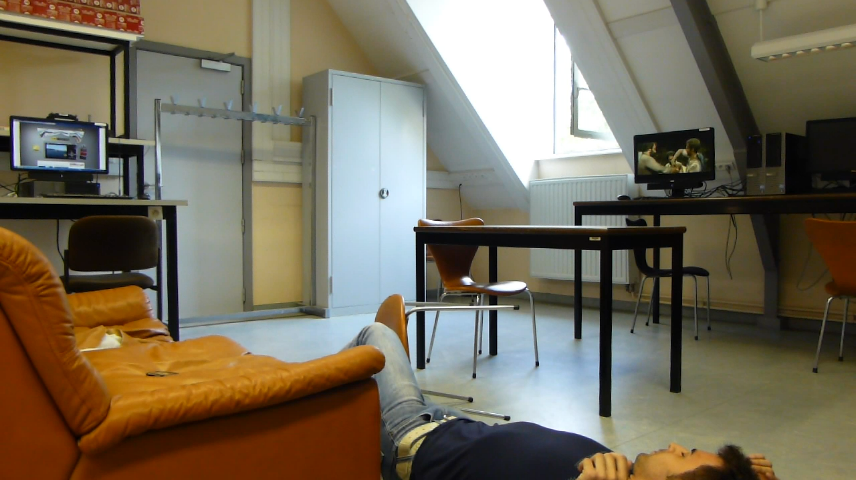
Figure 2: Real room environment. The human volunteer collides with the chair during the fall event.
For Further Reading
1. S. R. Lord, C. Sherrington, and H. B. Menz, “Falls in Older People: Risk Factors and Strategies for Prevention”. Cambridge, U.K., Cambridge Univ. Press, 2007.
2. M. Mercuri, D. Schreurs, and P. Leroux, “SFCW microwave radar for in-door fall detection,” IEEE Topical Conference on Biomedical Wireless Technologies (BioWireless), pp. 53-56, Santa Clara, CA, USA, 15-18 Jan. 2012.
3. M. Mercuri, P. J. Soh, G. Pandey, P. Karsmakers, G. A. E. Vandenbosch, P. Leroux, and D. Schreurs, “Analysis of an indoor biomedical radar-based system for health monitoring,” IEEE Trans. Microwave Theory Tech., vol. 61, no. 5, pp. 2061-2068, 2013.
4. M. Mercuri, D. Schreurs, and P. Leroux, “Optimised waveform design for radar sensor aimed at contactless health monitoring,” IET Electronic Letters, vol. 48, no. 20, pp. 1255-1257, Sep. 2012.
5. P. J. Soh, M. Mercuri, G. A. E. Vandenbosch, D. Schreurs, “A dual-band unidirectional planar bowtie monopole for a compact fall-detection radar and medical telemetry system,” IEEE Antennas and Wireless Propagation Letters , vol. 11, pp. 1698-1701, 2012.
6. P. Karsmakers, T. Croonenborghs, M. Mercuri, D. Schreurs, and P. Leroux, “Automatic in-door fall detection based on microwave radar measurements,” European Radar Conference (EuRAD), pp. 202-205, Amsterdam, The Netherlands, Oct. 28-Nov. 2 2012.
7. M. Mercuri, P. J. Soh, D. Schreurs, P. Leroux, “A Practical Distance Measurement Improvement Technique for a SFCW-based Health-Monitoring Radar in Real Indoor Environment,” Automatic RF Techniques Group Conference (ARFTG), pp. 1-4, Seattle, WA, USA, 7 June 2013.
Contributors
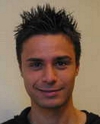 Marco Mercuri is currently working towards the Ph.D degree within the TELEMIC research group of the Department of Electrical Engineering (ESAT), KU Leuven, Belgium. His research interests include biomedical applications of microwave/RF, wireless sensors, and microwave/millimeter-wave measurements. Read More
Marco Mercuri is currently working towards the Ph.D degree within the TELEMIC research group of the Department of Electrical Engineering (ESAT), KU Leuven, Belgium. His research interests include biomedical applications of microwave/RF, wireless sensors, and microwave/millimeter-wave measurements. Read More
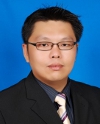 Ping Jack Soh is currently working towards his Ph.D in the ESAT-TELEMIC Research Division, Katholieke Universiteit Leuven, Belgium. His research interests include planar antennas, flexible/textile antennas, on-body communication, metamaterials, passive microwave components and microwave measurements. Read More
Ping Jack Soh is currently working towards his Ph.D in the ESAT-TELEMIC Research Division, Katholieke Universiteit Leuven, Belgium. His research interests include planar antennas, flexible/textile antennas, on-body communication, metamaterials, passive microwave components and microwave measurements. Read More
 Dominique Schreurs received the Ph.D. degree in electronic engineering from University of Leuven (KU Leuven), Belgium. She is a Full Professor at KU Leuven. Her main research interests concern the (non)linear characterization and modelling of microwave devices and circuits, as well as (non)linear hybrid and integrated circuit design for telecommunications and biomedical applications. Prof. D. Schreurs serves on the IEEE MTT-S AdCom as chair of the IEEE MTT-S Education Committee. D. Schreurs is Distinguished Microwave Lecturer for the period 2012-2014. She is also Associate Editor of the IEEE Microwave and Wireless Components Letters, Associate Editor of the International Journal of Microwave and Wireless Technologies, reviewer for various IEEE journals as well as TPRC member of IMS, BioWireless, and EuMW. She is also co-TPC chair of IMWS-Bio in 2013. Read More
Dominique Schreurs received the Ph.D. degree in electronic engineering from University of Leuven (KU Leuven), Belgium. She is a Full Professor at KU Leuven. Her main research interests concern the (non)linear characterization and modelling of microwave devices and circuits, as well as (non)linear hybrid and integrated circuit design for telecommunications and biomedical applications. Prof. D. Schreurs serves on the IEEE MTT-S AdCom as chair of the IEEE MTT-S Education Committee. D. Schreurs is Distinguished Microwave Lecturer for the period 2012-2014. She is also Associate Editor of the IEEE Microwave and Wireless Components Letters, Associate Editor of the International Journal of Microwave and Wireless Technologies, reviewer for various IEEE journals as well as TPRC member of IMS, BioWireless, and EuMW. She is also co-TPC chair of IMWS-Bio in 2013. Read More







 J.-C. Chiao is Greene endowed professor and Garrett endowed professor of Electrical Engineering at University of Texas - Arlington; and an Adjunct Associate Professor in the Internal Medicine Department at UT-Southwestern, Medical Center.
J.-C. Chiao is Greene endowed professor and Garrett endowed professor of Electrical Engineering at University of Texas - Arlington; and an Adjunct Associate Professor in the Internal Medicine Department at UT-Southwestern, Medical Center. 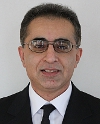 Mohammad-Reza Tofighi is an associate professor of electrical engineering with the Capital College, Pennsylvania State University, Middletown, PA. He conducts research on wireless implants, biomedical antennas, medical applications of microwave radiometry, and complex permittivity measurement of tissues using time and frequency domain methods.
Mohammad-Reza Tofighi is an associate professor of electrical engineering with the Capital College, Pennsylvania State University, Middletown, PA. He conducts research on wireless implants, biomedical antennas, medical applications of microwave radiometry, and complex permittivity measurement of tissues using time and frequency domain methods.  Bill Saltzstein is the President of connectBlue Inc., a leading provider of industrial and medical wireless solutions. Bill is also the Medical Business Development Director and joined connectBlue in February of 2011 with a vision to extend medical care out of the traditional environments through the use of wireless technologies.
Bill Saltzstein is the President of connectBlue Inc., a leading provider of industrial and medical wireless solutions. Bill is also the Medical Business Development Director and joined connectBlue in February of 2011 with a vision to extend medical care out of the traditional environments through the use of wireless technologies. 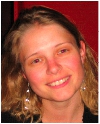 Katia Grenier (S'99 -M'03) received her Ph.D. degree in electrical engineering from the University of Toulouse, France. She is now with the LAAS-CNRS lab, in France, where her research interests are focused on the development of fluidic-based microsystems for biological and medical applications as well as for reconfigurable wireless.
Katia Grenier (S'99 -M'03) received her Ph.D. degree in electrical engineering from the University of Toulouse, France. She is now with the LAAS-CNRS lab, in France, where her research interests are focused on the development of fluidic-based microsystems for biological and medical applications as well as for reconfigurable wireless. 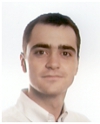 David Dubuc (S'99, M'03) received the Ph.D. degree in electrical engineering from the University of Toulouse, Toulouse, France. He is an Associate Professor with the University of Toulouse, and a Researcher with the Laboratory of Analysis and Architecture of System part of National Scientific Research Center (LAAS-CNRS), Toulouse, France. His research interests include the development of microwave circuits integrated due to microtechnologies and their application to wireless telecommunication and biology.
David Dubuc (S'99, M'03) received the Ph.D. degree in electrical engineering from the University of Toulouse, Toulouse, France. He is an Associate Professor with the University of Toulouse, and a Researcher with the Laboratory of Analysis and Architecture of System part of National Scientific Research Center (LAAS-CNRS), Toulouse, France. His research interests include the development of microwave circuits integrated due to microtechnologies and their application to wireless telecommunication and biology. 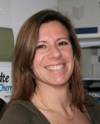 Mary Poupot received her PhD degree in Biochemistry from the University of Paul Sabatier, Toulouse, France. She is a Researcher at the Cancer Research Center of Toulouse. Her research interests are based on the impact of the tumor microenvironment on the survey of cancer cell in particular in hematopoietic diseases.
Mary Poupot received her PhD degree in Biochemistry from the University of Paul Sabatier, Toulouse, France. She is a Researcher at the Cancer Research Center of Toulouse. Her research interests are based on the impact of the tumor microenvironment on the survey of cancer cell in particular in hematopoietic diseases. 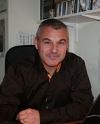 Jean-Jacques Fournié received his Ph.D. degree in microbial biochemistry from the University of Toulouse, Toulouse, France. He is currently heading the Cancer Research Center of Toulouse (CRCT), France. His fields of scientific expertise are biochemistry, pharmacology, immunology and cancer.
Jean-Jacques Fournié received his Ph.D. degree in microbial biochemistry from the University of Toulouse, Toulouse, France. He is currently heading the Cancer Research Center of Toulouse (CRCT), France. His fields of scientific expertise are biochemistry, pharmacology, immunology and cancer. 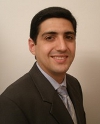 Gustavo Guarin is currently pursuing his PhD in Electric Engineering at the University of Erlangen-Nuremberg. He works at the Institute for Electronic Engineering with Prof. Dr.-Ing. Dr.-Ing. habil. Robert Weigel and with Prof. Dr.-Ing. Georg Fischer. The focus of his research is on Ultra-Wideband Microwave Sensors for spectroscopy applications in biomedicine.
Gustavo Guarin is currently pursuing his PhD in Electric Engineering at the University of Erlangen-Nuremberg. He works at the Institute for Electronic Engineering with Prof. Dr.-Ing. Dr.-Ing. habil. Robert Weigel and with Prof. Dr.-Ing. Georg Fischer. The focus of his research is on Ultra-Wideband Microwave Sensors for spectroscopy applications in biomedicine. 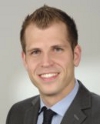 Maximilian Hofmann received the Dipl.-Ing. degree in electrical, electronic and communications engineering from the University of Erlangen-Nuremberg, Nuremberg, Erlangen, Germany. He joined the Institute for Electronics Engineering, Erlangen, Germany, as a Research Assistant.
Maximilian Hofmann received the Dipl.-Ing. degree in electrical, electronic and communications engineering from the University of Erlangen-Nuremberg, Nuremberg, Erlangen, Germany. He joined the Institute for Electronics Engineering, Erlangen, Germany, as a Research Assistant. 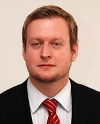 Dietmar Kissinger received the Dr.-Ing. degree in electrical engineering from the University of Erlangen-Nuremberg, Erlangen, Germany. He holds a position as Lecturer and Head of the RF Integrated Sensors Group at the Institute for Electronics Engineering. His research interests include silicon-based microwave and millimeter-wave integrated circuits as well as wireless sensors and communication systems for ultra-low power, automotive, industrial, security, and medical applications.
Dietmar Kissinger received the Dr.-Ing. degree in electrical engineering from the University of Erlangen-Nuremberg, Erlangen, Germany. He holds a position as Lecturer and Head of the RF Integrated Sensors Group at the Institute for Electronics Engineering. His research interests include silicon-based microwave and millimeter-wave integrated circuits as well as wireless sensors and communication systems for ultra-low power, automotive, industrial, security, and medical applications. 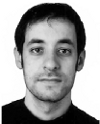 Dr. Cristiano Palego is a senior lecturer in Smart Sensors and Instrumentation at Bangor University, UK and a visiting research scientist at Lehigh University, USA. He received the Ph.D. degree in Microwave Engineering and Optoelectronics from the University of Limoges, France. He is currently a research scientist at Lehigh. His interests include electromagnetic theory, micro/nanotechnology and biomedical research as well as RF-MEMS for reconfigurable frontends, antenna arrays, and high-power applications.
Dr. Cristiano Palego is a senior lecturer in Smart Sensors and Instrumentation at Bangor University, UK and a visiting research scientist at Lehigh University, USA. He received the Ph.D. degree in Microwave Engineering and Optoelectronics from the University of Limoges, France. He is currently a research scientist at Lehigh. His interests include electromagnetic theory, micro/nanotechnology and biomedical research as well as RF-MEMS for reconfigurable frontends, antenna arrays, and high-power applications.  Dr. Caterina Merla received the Ph.D. degrees in electronic engineering from the University of Rome "La Sapienza," Italy. She is currently with the Italian National Agency for New Technologies, Energy and Sustainable Economic Development (ENEA), Research Centre in Rome and a Visiting Research Scientist at Lehigh University, Bethlehem, PA. Her research interests are mainly focused on the microdosimetric evaluation of the electromagnetic (EM) field at single cell level, biological sample dielectric measurements, and design and dosimetry of exposure systems oriented to EM protection studies and medical applications.
Dr. Caterina Merla received the Ph.D. degrees in electronic engineering from the University of Rome "La Sapienza," Italy. She is currently with the Italian National Agency for New Technologies, Energy and Sustainable Economic Development (ENEA), Research Centre in Rome and a Visiting Research Scientist at Lehigh University, Bethlehem, PA. Her research interests are mainly focused on the microdosimetric evaluation of the electromagnetic (EM) field at single cell level, biological sample dielectric measurements, and design and dosimetry of exposure systems oriented to EM protection studies and medical applications.  Yaqing Ning is currently working toward her Ph.D. degree at Lehigh University. She is involved in research on RF MEMS capacitive switches and phase shifters, as well as on biomedical devices for detection purposes. She specializes in 3D electromagnetic simulation using finite element methods.
Yaqing Ning is currently working toward her Ph.D. degree at Lehigh University. She is involved in research on RF MEMS capacitive switches and phase shifters, as well as on biomedical devices for detection purposes. She specializes in 3D electromagnetic simulation using finite element methods. 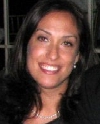 Caroline Multari is currently working towards her Ph.D. at Lehigh University in Materials Science and Engineering, focusing on research in point-of-care microfluidic biosensors and developing polymeric biomaterials for bioparticle capture.
Caroline Multari is currently working towards her Ph.D. at Lehigh University in Materials Science and Engineering, focusing on research in point-of-care microfluidic biosensors and developing polymeric biomaterials for bioparticle capture.  Dr. Xuanhong Cheng is the Rossin Assistant professor of Bioengineering and Materials Science and Engineering at Lehigh University. She received her Ph.D. in bioengineering at University of Washington. She joined Lehigh University, where her current research interest is focused on developing new nanomaterials and microfluidic platforms to analyze intact, live bioparticles, such as cells and pathogens at the point of need.
Dr. Xuanhong Cheng is the Rossin Assistant professor of Bioengineering and Materials Science and Engineering at Lehigh University. She received her Ph.D. in bioengineering at University of Washington. She joined Lehigh University, where her current research interest is focused on developing new nanomaterials and microfluidic platforms to analyze intact, live bioparticles, such as cells and pathogens at the point of need.  Prof. James C. M. Hwang received the Ph.D. degree in materials science from Cornell University, Ithaca, NY. He joined Lehigh University, Bethlehem, PA as a Professor of electrical engineering and Director of the Compound Semiconductor Technology Laboratory. His current research interests include MEMS, microwave and photonic devices and integrated circuits, and bio-electromagnetics.
Prof. James C. M. Hwang received the Ph.D. degree in materials science from Cornell University, Ithaca, NY. He joined Lehigh University, Bethlehem, PA as a Professor of electrical engineering and Director of the Compound Semiconductor Technology Laboratory. His current research interests include MEMS, microwave and photonic devices and integrated circuits, and bio-electromagnetics.  Marco Mercuri is currently working towards the Ph.D degree within the TELEMIC research group of the Department of Electrical Engineering (ESAT), KU Leuven, Belgium. His research interests include biomedical applications of microwave/RF, wireless sensors, and microwave/millimeter-wave measurements.
Marco Mercuri is currently working towards the Ph.D degree within the TELEMIC research group of the Department of Electrical Engineering (ESAT), KU Leuven, Belgium. His research interests include biomedical applications of microwave/RF, wireless sensors, and microwave/millimeter-wave measurements.  Ping Jack Soh is currently working towards his Ph.D in the ESAT-TELEMIC Research Division, Katholieke Universiteit Leuven, Belgium. His research interests include planar antennas, flexible/textile antennas, on-body communication, metamaterials, passive microwave components and microwave measurements.
Ping Jack Soh is currently working towards his Ph.D in the ESAT-TELEMIC Research Division, Katholieke Universiteit Leuven, Belgium. His research interests include planar antennas, flexible/textile antennas, on-body communication, metamaterials, passive microwave components and microwave measurements. 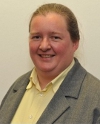 Dominique Schreurs received the Ph.D. degree in electronic engineering from University of Leuven (KU Leuven), Belgium. She is a Full Professor at KU Leuven. Her main research interests concern the (non)linear characterization and modelling of microwave devices and circuits, as well as (non)linear hybrid and integrated circuit design for telecommunications and biomedical applications.
Dominique Schreurs received the Ph.D. degree in electronic engineering from University of Leuven (KU Leuven), Belgium. She is a Full Professor at KU Leuven. Her main research interests concern the (non)linear characterization and modelling of microwave devices and circuits, as well as (non)linear hybrid and integrated circuit design for telecommunications and biomedical applications.